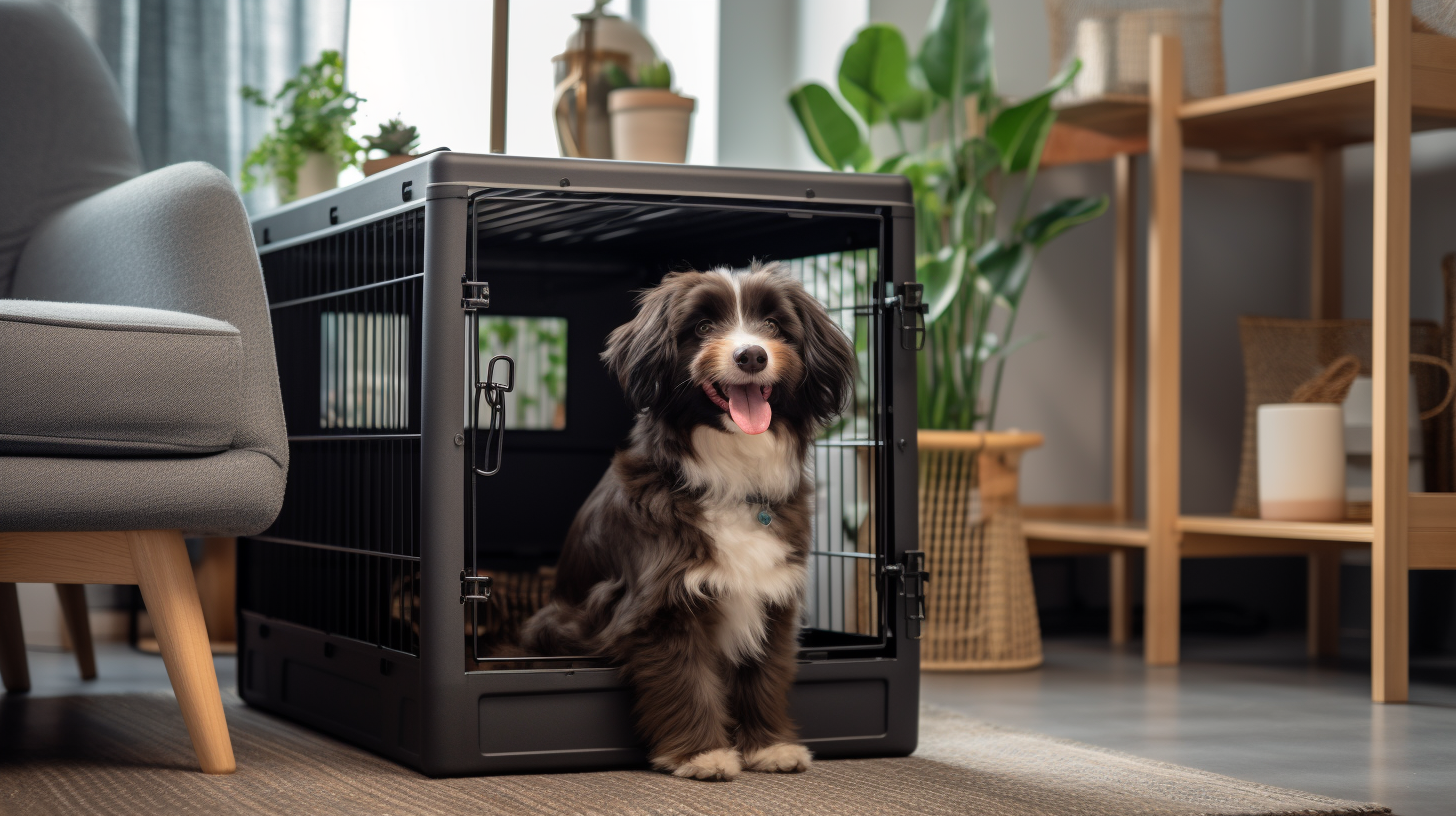The Advantages of Crate Training
There are many different approaches and strategies in the field of dog training, and each has its supporters. One such method that has become very popular in recent years is crate and kennel training. We will dig into the subject of crate and kennel training in this extensive tutorial, examining the numerous advantages it provides for dogs and their owners.
 Recognizing Kennel and Crate Training
Recognizing Kennel and Crate Training
Let’s define cage and kennel training before delving into its benefits. Crate training is providing your dog with a secure and cozy environment in a crate or kennel. Housetraining, giving a protected location, and facilitating travel are just a few uses for the crate’s comfortable, den-like atmosphere.
First Advantage: Streamlined Housetraining
Housetraining pups and even older dogs is one of the biggest advantages of crate and kennel training. Because they naturally don’t like to poop in their beds, dogs will store their urine and feces in a well-sized kennel until they are taken outside. As a result, both the dog and the owner have a speedier and less stressful housetraining procedure.
Benefit#2: Establishing a Haven of Safety
Because they are den creatures by nature, dogs might find refuge in a crate or kennel. When properly introduced, dogs come to view their crate as a secure and cozy place to rest, decompress, and hide when they need a vacation from the daily chaos of the house. Dogs can experience less tension and anxiety when they feel secure, especially when there are loud noises or when guests are around.
Third Advantage: Avoiding Harmful Conduct
Especially with pups, controlling destructive activities like chewing and digging can be difficult. With crate training, you can confine your dog when you are unable to watch over them, keeping them from misbehaving and safeguarding your possessions.
Benefit #4: Making Travel and Veterinary Visits Easier
For dogs and their owners, crate and kennel training can greatly reduce the stress associated with travel and veterinarian appointments. Canines who are comfortable in their cages are less likely to become nervous when seeing the vet and are also more relaxed on automobile rides. Crate training is crucial for people who want to travel with their pets because a lot of airlines mandate that dogs travel in crates.
Advantage 5: Guaranteeing Security

Advantage 6: Managing Multiple Dogs Is Easier
Crate training can make dog ownership easier for families with several pets. When needed, such as at mealtimes or when one dog needs rest or medication, it enables you to separate the dogs. This avoids disputes and guarantees that every dog’s specific demands are satisfied.
In summary
To sum up, crate and kennel training is a very useful and successful method of teaching dogs. It has benefits including accelerating housebreaking, fostering a safe environment for dogs, stopping destructive tendencies, enabling travel, guaranteeing security, and streamlining the upkeep of several canines. When carried out properly, crate training creates a safe, happy environment that improves the dog’s quality of life and the owner’s peace of mind.
Although crate and kennel training can be time-consuming, patient, and require the right supervision, the long-term advantages make it an investment worth making in both your dog’s health and the quality of your connection with them.
To watch a very detailed video Tom, the owner of Off leash K9 created, click here.


 Recognizing Kennel and Crate Training
Recognizing Kennel and Crate Training